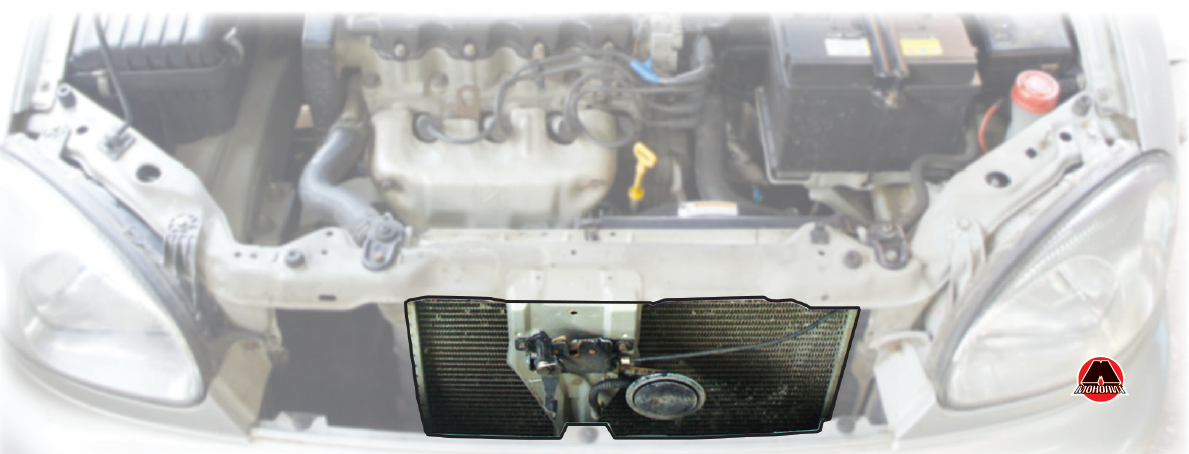4.8.4 Radiator
 Figure 4.33 Radiator.
Figure 4.33 Radiator.
This is a set of thin tubes on which thin plates are strung for increasing the surface area, which is intended for heat dissipation. The main function of a radiator is to cool the liquid, which circulates inside its tubes.
Figure 4.34 shows an example of a radiator section with various versions.
 Figure 4.34 Styles of design of cooling system radiator.
Figure 4.34 Styles of design of cooling system radiator.
Tanks, to which the upper and lower branch pipes of the cooling system are connected, respectively, can be placed on the upper and lower parts of the radiator. In case if the tanks are installed, then in the upper one there is usually a filler for filling in coolant. In case if the tanks are not installed, then the neck of the expansion tank shall be used for filling. The tubes of the radiator are made flat and arranged in rows in a checkerboard pattern for better cooling of the liquid. A large number of thin brass plates, that are called cooling fins, are installed across the tubes. They increase the cooling surface of the core and promote more intense heat transfer from the water to the air passing through the core.
In a closed-type cooling system, the radiator filler is tightly closed by a special plug with a double steam-air valve (see Figure 4.35). The air valve of the plug is loaded with a weak spring and allows passing of atmospheric air inside the radiator. This eliminates the possibility of a vacuum in the radiator reservoir, which appears during condensation of water vapor.
The steam valve is loaded with a stronger spring and opens in order to release steam only when the pressure in the radiator exceeds atmospheric and reaches 1.28-1.38 kg/cm2.
 Figure 4.35 Radiator cap.
Figure 4.35 Radiator cap.



















2 MB